WEEK 0: _ model (draw, render, animate, simulate...)
Web Design + Git Repository
Hello world! This week marks the creation of this very website. I'm am writing to you right now from an Atom viewer for html, and posting through the cygwin terminal for windows computers. Both are new to me! For future reference, this excerpt of Amanda and Sam's Git Tutorial is PURE GOLD - it is all you will never need to know and you will never go wrong uploading like this:

Final Project Initial Design
For my (potential) final project, I decided to make something very special for the microbes I work with in the biological wet lab each day. My cultures span many species, and even kingdoms; from genetic modification of lab workhorse, E. coil, to Halobacteria Archaea, to P. Physarum (a.k.a. slime mold).
An urgent and persisting ambition for me is to find non-traditional ways to contain and/or integrate living organisms into our society’s objects, tools and materials. Currently, living biologics are strictly contained in petri dishes, test tubes and bioreactors; rudimentary glass and plastic forms. If we in fact want to make use of the unique modes of 'intelligence', sensing, and production, naturally or synthetically occurring in organisms, we need to begin to envision how this may be achieved.
All of these organism have minimum requirements for growth, relating to temperature, hydration and nutrition. These growing conditions are maintained via incubation, liquid culture or a hydro-gel matrix such as Agar, and a nutrient broth such as LB. How do we provide these necessities outside a dish? My solution is ---- an Agar Sprayer, for the generation of optimal growth conditions on three-dimensional shapes.
3-Dimentional CAD
Here I am using Rhinoceros 5.0. It has a interesting combination of command line functions, or buttons (if you go hunting for them). My favorite tool thus far are the 1 and 2 Rail tools. All help for this program is very easily searchable online, with full youtube tutorials.
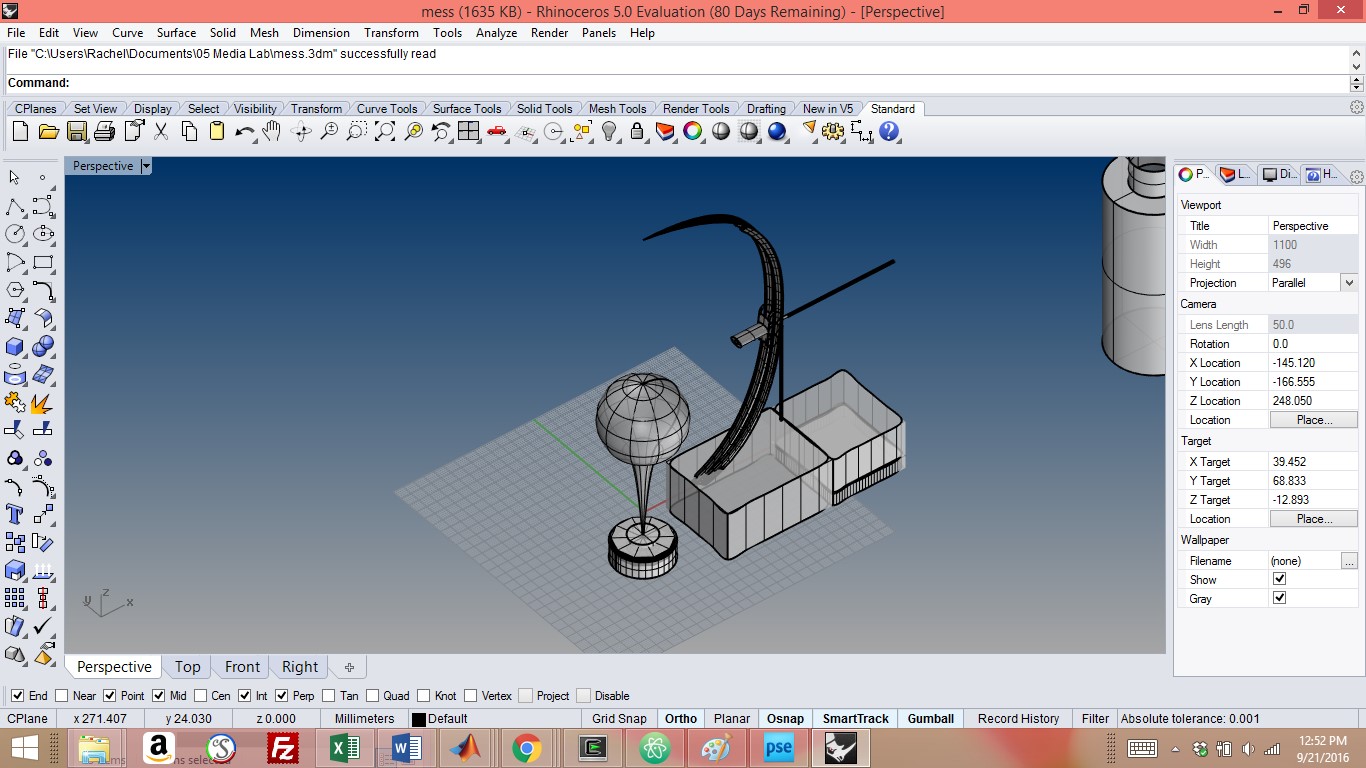
In Rhino, I made a CAD design of an Agar Sprayer that is modular to any size object being sprayed. This is achieved by a two component system: (1) A rotating platform on which the target object lies (2) an arching track in the other axis. The spray nozzle can traverse any track shape, and has flexible lines leading to a pressurized air canister and heated agar reservoir.
2-Dimentional CAD
Here I used Photoshop Elements to draw the inner globe shaped structure of my design in 2D. I decided it could be spruced up by adding a smashing skyscape and the sentiment of the anthropomorphized bacterial living on it.
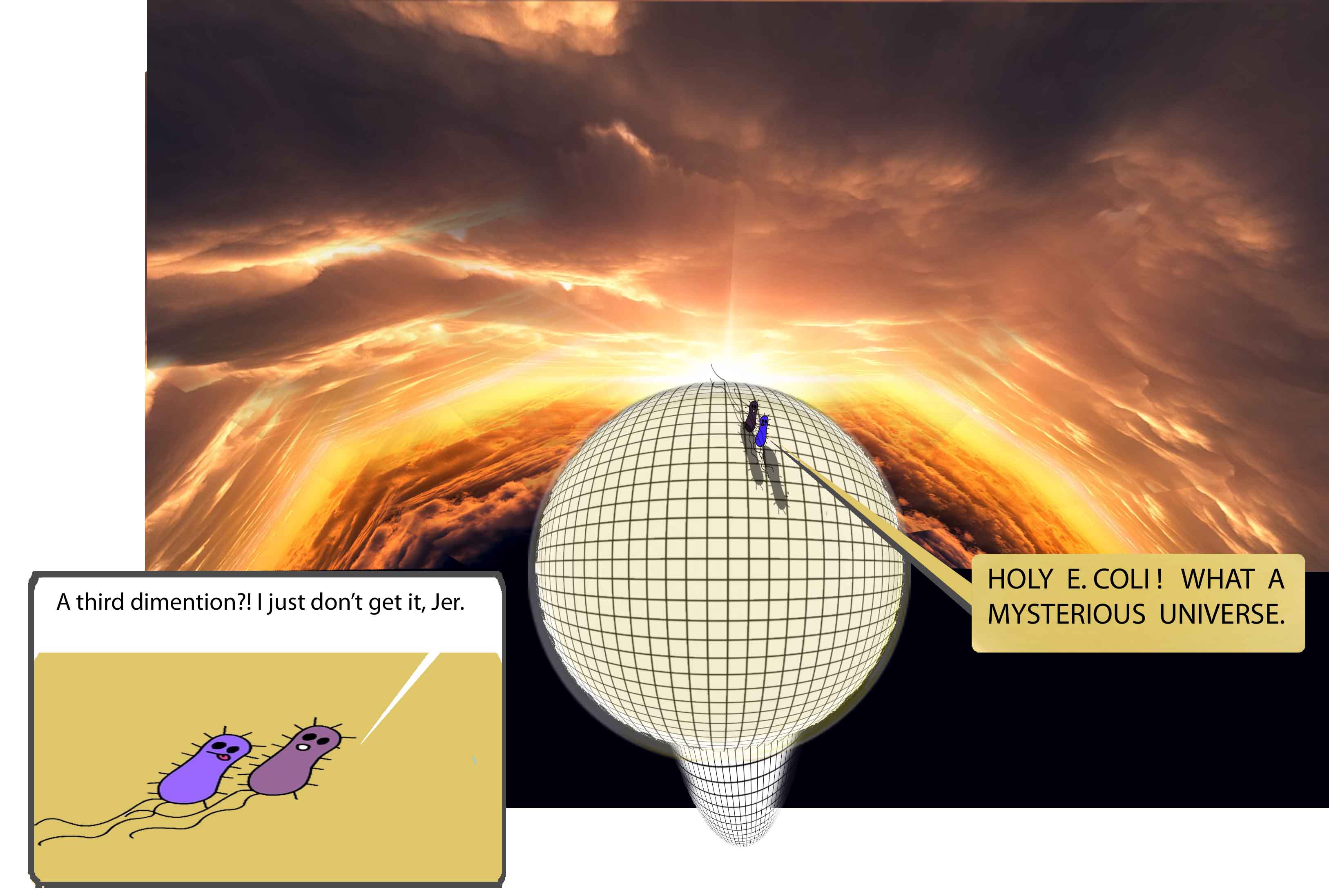
I hoped to express a more abstract message; the transition from Flatland to a three dimentional world.
So. what is the spacial foraging logic of a P. Physarum on a Sphere? How does graded Halobacterium growth respond to a equatorial heat or radiation source? What can we make with light responsive bacteria on a complex three dimensional surface??
Exciting.
Final Project Initial Design (cont.)
For my final project, I initially decided to make something for the microbes I work with in the biological wet lab each day. My cultures span many species, and even kingdoms; from genetic modification of lab workhorse, E. coil, to Halobacteria Archaea, to P. Physarum (a.k.a. slime mold).
An urgent and persisting ambition for me is to find non-traditional ways to contain and/or integrate living organisms into our soceity's objects, tools and materials. Currently, living biologics are strictly contained in petri dishes, test tubes and bioreactors; rudimentary glass and plastic forms. If we in fact want to make use of the unique modes of 'intellegence', sensing, and production, naturally or synthetically orccuring in organisms, we need to begin to envision how this may be achieved. How do our lab strains act in environments different from the laboartory default?
My design challenge was to find a way to put my micrbes into three dimentional enviroments!
In a way I see this as my duty to Edwin Abbot Abbot, the headmaster who in 1884 published the novella of a romance in many dimentions, "Flatland".
You see, in Flatland, inhabitants live in two dimentions and cannot concceptuailize a thrid. That is, until objects from the third dimention force our protagonist, a square, to think beyond the plane in which he lives. (Carl Sagan explains this aptly)
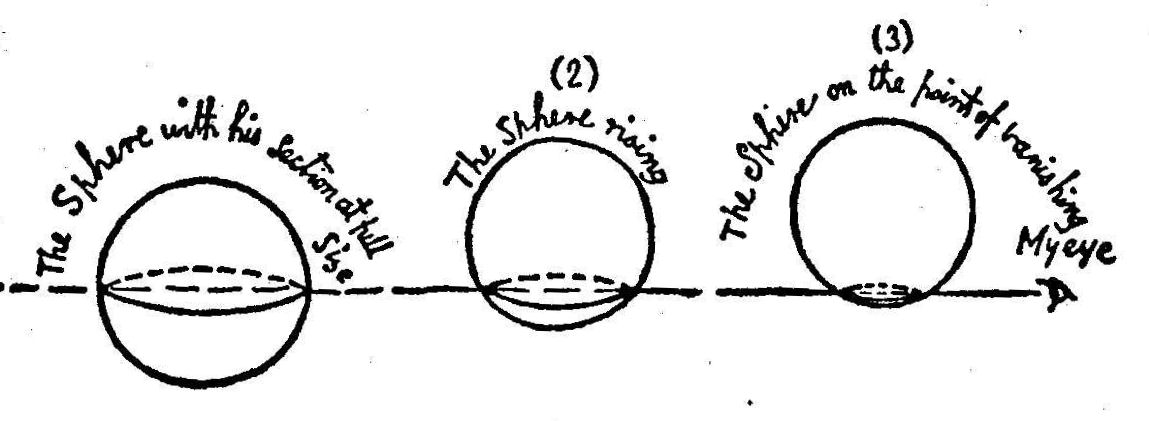

Similarly, microbes and cells are swabbed onto flat planes (of agar or biocompatible polymer) and most regularly grow into a sheet until they reach confluence (contact inhibition). However, this is not to say they do not have some type of spacial awareness, evolved often for nutrient foraging; i.e. the paenibacillus dendritiformis and the paenibacillus vortex of Eshel Ben-Jacob the late Maguy-Glass Chair in Physics of Complex Systems in the School of Physics and Astronomy.
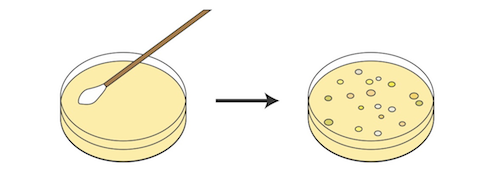
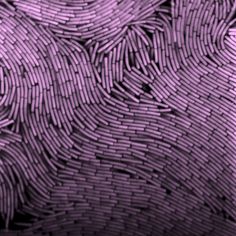
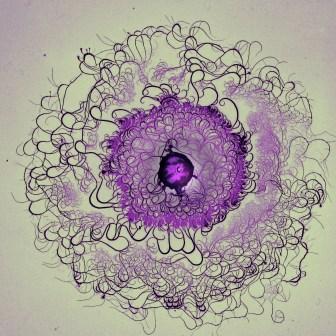
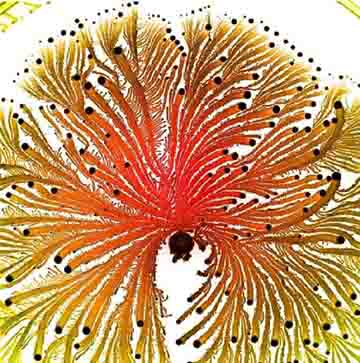
So. How can microbial behavior be altered and studoed in the third dimention. What shapes can we give to them. What happens what a colony grows outwards on a sphere so far in one direction that is collides with itself?? Many questions. A grand new universe for our laboratory creatures.
All organism have minimum requirements for growth, relating to tempature, hydration and nutrition. These growing conditions are maintained via incubation, liquid culture or a hydro-gel matrix such as Agar, and a nutrient broth such as LB. How do we provide these necesities outside a dish? My solution is ---- an Agar Sprayer, for the generation of optimal growth conditions on three-dimentiional shapes.
